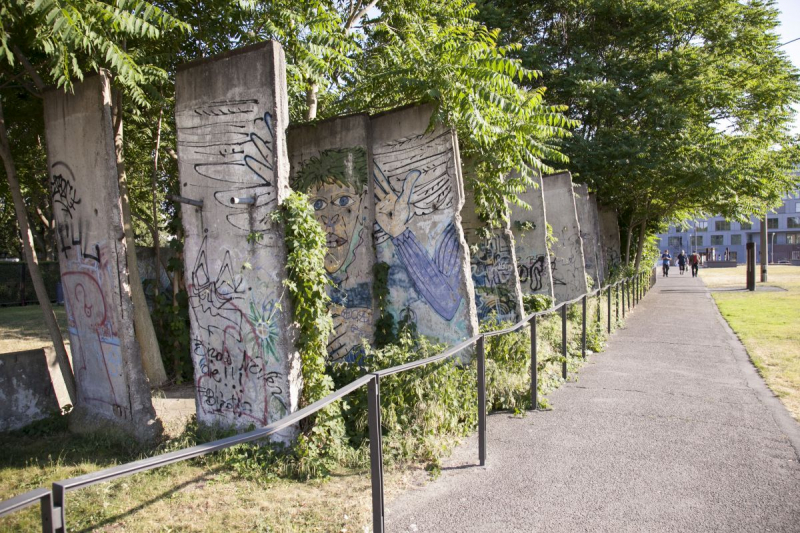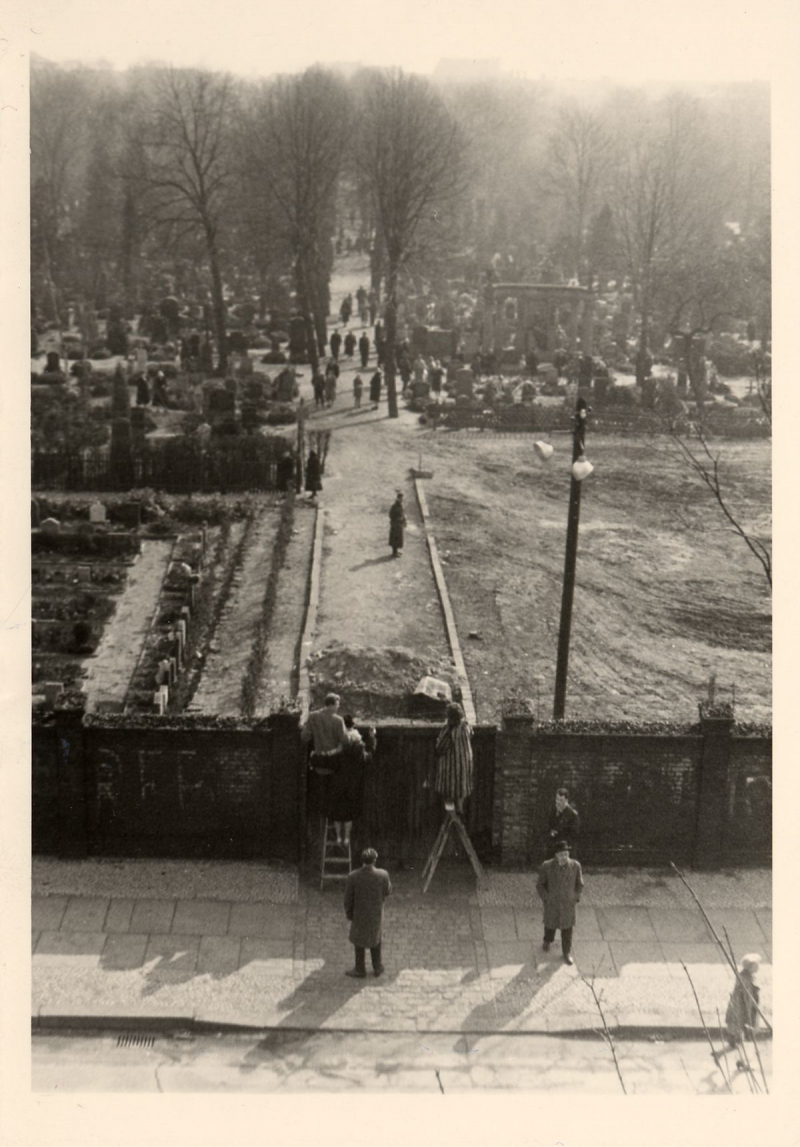Segments of the Wall

© Stiftung Berliner Mauer
You are standing in front of individual segments of the Berlin Wall that were removed from their original position by members of the Sophien parish in 1997. If you look towards Bernauer Straße, you’ll see the gaps in the Berlin Wall. That is where these pieces of the Wall had stood. By tearing down these segments, the Sophien parish wanted to draw attention to the fact that a cemetery had once existed on these grounds. Furthermore, many of the congregation members and local residents found it unbearable to have to look at the Wall any longer after November 9, 1989.
The border fortifications were continually expanded after 1961. In the end, the grounds were 40 meters wide. The border strip displaced the cemetery and the gravesites where civilian war victims had been buried. Today attention is drawn to these missing gravesites through long strips of Corten steel that are set into the ground to mark where the graves used to be. The parish leadership also had the cemetery’s redbrick gate reconstructed as a way to further underscore the history of these grounds. You can reach the cemetery gate by walking towards the monument and Documentation Center.

View of the Sophienfriedhof, the first graves have already been exhumed, ca. 1965 © Lazarus-Archiv
The opening in the Wall is 19 meters long. A long debate about this gap was held over many years, linked to the general controversy about finding an appropriate form for commemoration. How should the history of Germany’s division be presented? The Berlin Wall Foundation sees the relocation of these 32 pieces of Wall in 1997 as part of the history of Bernauer Straße. This is why it did not reproduce the missing pieces but instead chose to symbolically represent them. The poles of Corten steel indicate where the Wall had stood. But it is possible to look through them. You can walk right up to the poles and get a glimpse of the line they form. What impression do they make on you?
The nearby exhibit station addresses the subject of “The Wall at the Sophien Parish Cemetery” and provides more information about the history of the cemetery during the time of division, about the graves that were removed and the consequences for the relatives of the deceased who were buried here.